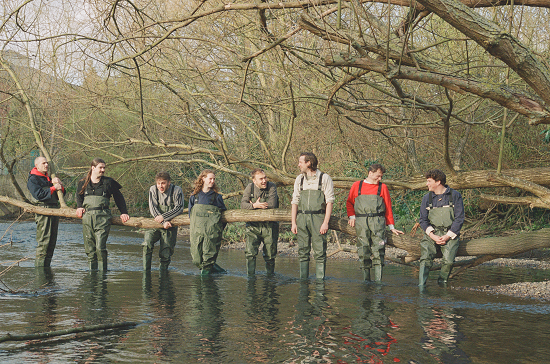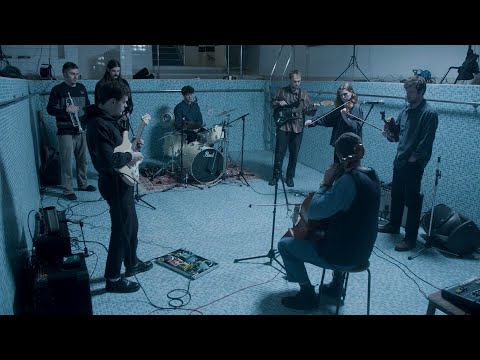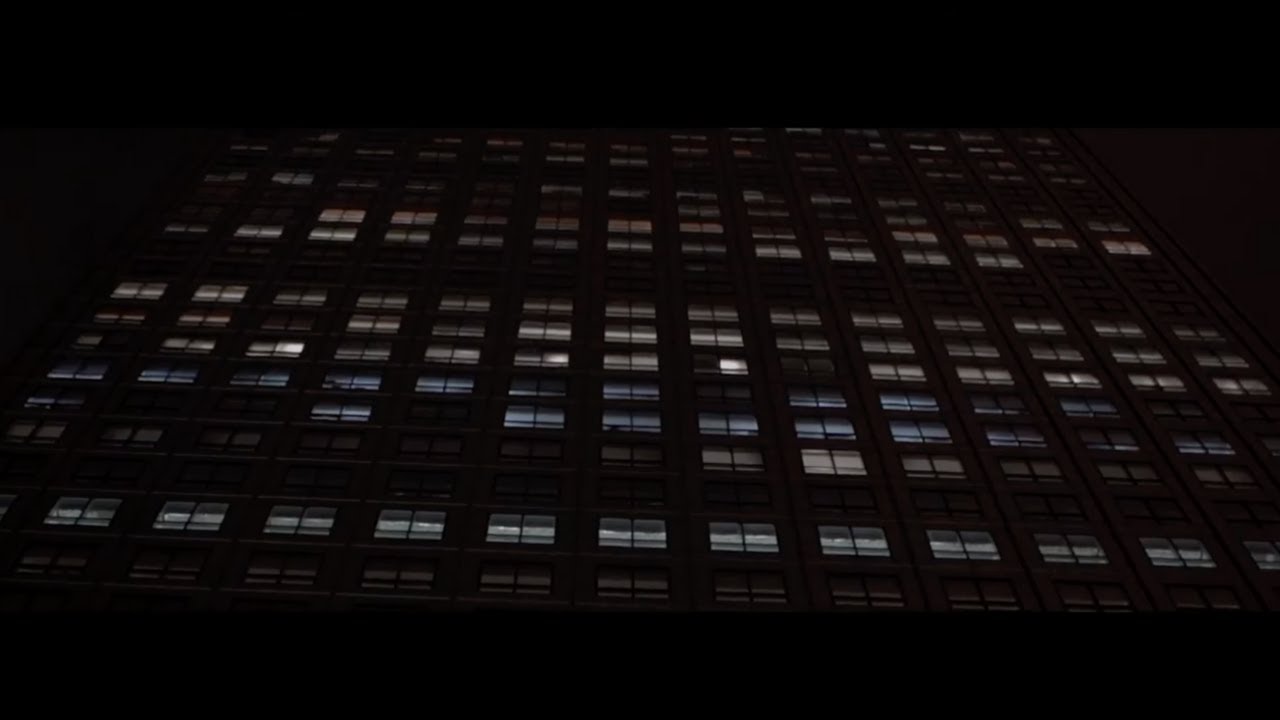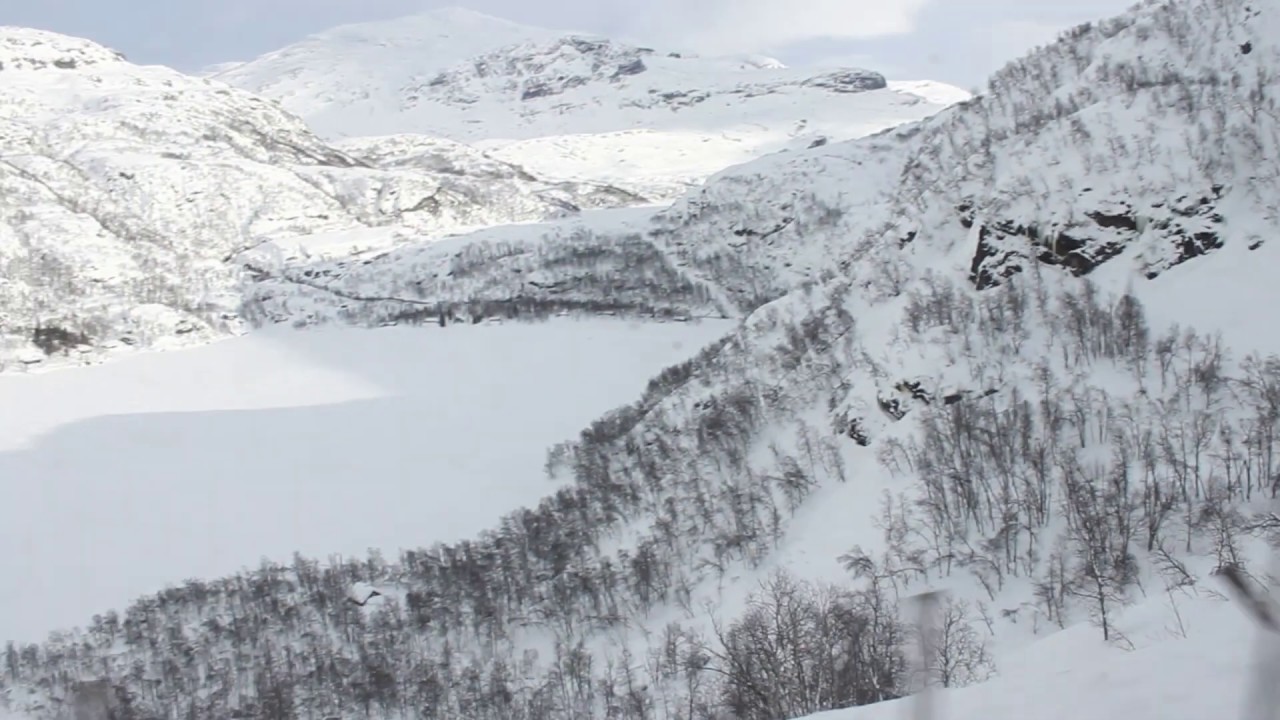Photo by Nancy Barnes
I meet Casper Hughes, Jasper Llewellyn and Mike O’Malley, the three musicians who are the nucleus of eight-piece band caroline, off the Overground train at Rotherhithe, South London. It’s mid-afternoon in the crest of a mini-heatwave, and the Thames sparkles as we amble along its bank, making small talk about wading – a hobby many of the band took up during lockdown. The skyscrapers of the city ebb in and out of view in the distance as we weave through shady alleyways and awnings. We pass the Brunel Museum, and reminisce about seeing gigs in its cavernous Grade II listed tunnel shaft, the entrance to the oldest underwater tunnel on earth; they fantasise about playing there themselves one day.
Eventually we settle outside a pub overlooking the river. St. John’s Wharf on Wapping High Street, once a dockyard warehouse and now a block of flats, looms at us from across the water. There are no seats in the shade, so we pass around a bottle of sun cream, each of us trying to find a position in which to avoid the worst of the sun’s glare and eventually settling in an uneven circle. Hughes sits beside me on a bench, O’Malley cross-legged on the floor, squinting even behind sunglasses, and Llewellyn propped awkwardly on a bollard.
These three are the core of caroline, Hughes and O’Malley providing electric guitars and backing vocals, Llewellyn contributing lead vocals, acoustic guitar, cello and drums. From their improvisational sessions as a trio they extract little musical phrases that they then take to the extended band – who between them provide clarinet, saxophone, trumpet, bass, two violins, and additional percussion. Over the space of many sessions the eight-piece take those phrases, repeat them, refine them and expand them, until they blossom into lush, sprawling and powerful pieces of music. Take ‘Skydiving onto the library roof’ as a good example, a piece built around what they call a ‘broken loop,’ attacks and decays with no fixed pulse or rhythm, the musicians improvising within its hypnotic cycles.
You’d barely believe it, given the lavish, ornate instrumentation of caroline’s slender discography so far, but the band’s nascent form was as an angular rock duo who rehearsed in a grand but dilapidated old room above a pub in South East London in the mid-2010s. “It was a bit post-punky, even though we didn’t listen to much post-punk music, I think that was just popular at the time,” says Hughes, smiling at their past naivety. He and Llewellyn had been playing together since they met at university in Manchester, where both lived from 2012 until 2016. Both then moved to London to pursue further education. By early 2017 O’Malley, with whom Llewellyn had been in a band playing Appalachian folk standards as teenagers in Sussex, had been brought in to provide additional guitar.
The seeds of ‘Dark blue’, a gorgeous piece based around a simple, gently coiled guitar riff that was released as caroline’s debut single for Rough Trade last year, were planted one of the very first times the three played together, although it sounded very different from the hypnotic final song. “It was still just in a guitar and drums format,” says Llewellyn, although a slow metamorphosis had now begun. “I think it was a bit softer than what we’d been doing as a pair, and more melodic.”
A looping, hypnotic style was emerging, where the three would stay on a single cyclical phrase. Hughes puts it down simply to O’Malley’s additional guitar work allowing him to play more simply. “I don’t think my level of playing was really suited to being a solo guitarist,” he admits. Perhaps this repetitiousness had its roots in his own background in his younger interests in house and techno, but it emerged subconsciously. “I just remember it being a bit of a change for both of you,” he says to his bandmates. “I think you were used to playing folk music, where there’s verses and choruses and chord changes.” “It was instantly quite liberating,” says O’Malley. “Like, ‘that sounds nice, let’s not ruin it!’”
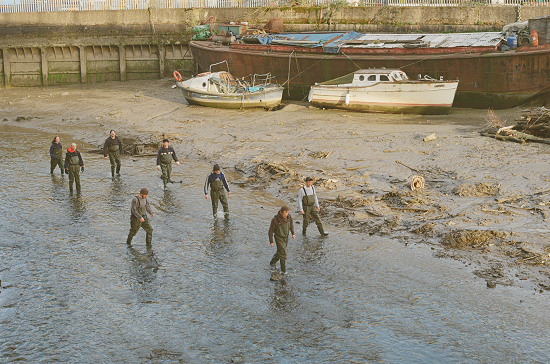
Photo by Nancy Barnes
The four of us spy a newly vacant corner of shade, and scurry there to set up a new, more comfortable circle. Llewellyn rolls a cigarette, borrows a lighter from nearby punters, and gesticulates with it as he and O’Malley reflect fondly on their time as teenage folk musicians. Performing at weddings and busking on the streets, they played – and drank – their way across Europe three times. “I feel like it became a thing where people would talk about us like ‘There’s these kids who get really drunk, it’s really funny,’” says O’Malley. “But then by the time we’re like, 22… well it wasn’t as cute.”
That band dissolved when the musicians were in their early 20s. Llewellyn in particular looks back on it a little sheepishly: “I’m a bit ashamed of it!” he half-jokes, before adopting an air of mock pomposity. “‘Yeah, I was in a wedding band, no big deal!’” Yet they took from it crucial lessons. “We never played amplified and played for an hour and a half at a time, a set or two sets a day, having to work our voices really hard,” Llewellyn continues. Combine this with his time singing in choirs growing up and you have a voice of considerable power. At the start of ‘Skydiving…’ he sings backed only by a sparse, yearning cello line. All at once his voice feels buried in the distance, as if recorded on the side of a road, and booms with hymnal transcendence. “I think earlier on I tried to get rid of that choral, vibrato sound in my voice, I wouldn’t own up to it! But now I’ve not so much embraced it, but just stopped trying not to do it.”
Another practical benefit of the folk band was that it produced two more future members of caroline, percussionist Hugh Aynsley and original clarinet and saxophone player Nathan Pigott – later replaced by Alex McKenzie. One of their two violinists, Oliver Hamilton, was also a folk musician, who they had played with in Manchester. The group’s larger line-up – completed by trumpeter and bassist Freddy Wordsworth and another violinist Magdalena McLean – evolved much like the songs the central trio were writing above the pub in South London: slowly and organically, according to creative need.
“Because we weren’t playing shows much at all, we didn’t have any sense of what the band ‘was’,” Llewellyn explains. “It was on a song-by-song basis. Like, ‘It would be good to have some violin,’ so we get a violinist. ‘I can’t play drums and cello at the same time on ‘Skydiving…’’ so our friend Hugh comes in to play drums. We weren’t trying to be a big, large band, it was just a thing of ‘that would be good’, and then everyone was in the band.” They’re now firmly settled on their eight-piece line-up, all of whom are now full-time members around Hughes, Llewellyn and O’Malley’s central core, although for a time, things were more transitory.
As members came and went in the early years, caroline kept shapeshifting. At one point they were a four-piece rock band with a friend on bass who played a show so disastrous – Llewellyn had just broken up with his girlfriend who was also performing that night, and “basically lost all perspective of what was too much” as he played out his feelings onstage in a solo acoustic guitar number – that O’Malley assumed they’d split up after a subsequent month of embarrassed radio silence from his bandmates. Yet for all the emotional bumps in the road, songs like ‘Dark blue’ were still growing steadily into something more and more sophisticated.
After the repetitious aspect that had emerged from their early improvisations as a trio came “the next stage of realisation,” as Llewellyn puts it, that they could start playing with dynamics to dramatic effect. Part of what makes their music so transfixing is the way it ebbs and flows, the way ‘Dark blue’’s repeated riff can so slowly and simply build into something so staggeringly moving. With moments of quiet and silence, the band provide space for the listener’s reflection on the beautiful noise that’s just gone. When the moments of loud return, often in an irresistible rush, what passions have bubbled up get swept up in the next wave of music. As the process repeats, that whirl of emotions grows each time, both cyclical and constantly expansive.
The sound that caroline make now is one that is at once minimal and maximal. On the one hand, eight musicians make a grand noise that seems almost frayed at the edges, drums and feedback tumbling as they play. On the other, however, “we’re actually quite sparing and particular about what everyone is playing,” says Hughes. “Obviously, all the band are really good players and add their own personality and style to it, but there can be nothing extraneous. Nothing that doesn’t make sense.” Even in conversation the three are intense self-analysists. They think hard about my questions and will pull each other up on their answers if they disagree over the details; by his own admission, Llewellyn is an extreme over-thinker. You sense it’s the same when they record. “At the start I think we tried to pare things back as much as possible and think about what a song is in its essence, and what doesn’t need to be there,” Hughes continues.
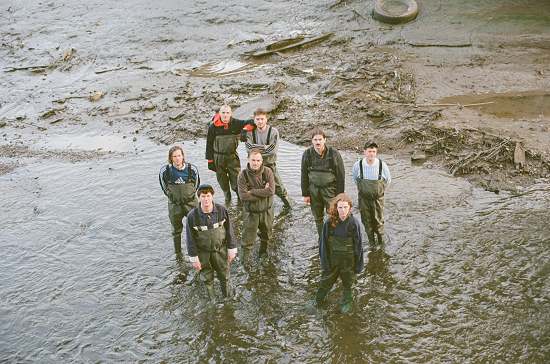
Photo by Doug Pulman
All of this makes for music that above all else is extremely atmospheric. It’s an adjective they’ve heard often when people describe their work, and one that they embrace. In live videos for ‘Dark blue’ and ‘Skydiving…’ (the latter of which premieres with tQ above), they perform the songs in an empty swimming pool, their playing echoing eerily off the close pool walls. It makes for a deeply intense watch. At gigs, too, they embrace the way their songs’ swirling ebbs and flows can interact with the room where they’re played. “I think our music allows for all the other things that are in that situation,” says Llewellyn. “There’s something about the space and the gaps, the repetition. Something about it allows the room to be levelled up, rather than crushed down as an annoying thing that has to be there. Large gaps and drones and repetition almost meld with the room that you’re in.” It’s for this reason the band enjoy playing in alternative spaces, that they fantasised about the Brunel Museum tunnel shaft when we passed it on our walk. Llewellyn eagerly tells his bandmates about an idea he’s had of performing in the tunnels under the Elverson Road DLR Station in Lewisham, a spot he recently explored while wading, where shallow water swamps the floor and stalactites hang from the ceiling.
Whenever they can, caroline perform in the round, the formation best suited to the little gestures and prompts, the widening of eyes and the jutting of chins that zigzag across the circle, required for the eight of them to move in tandem. Also, says Llewellyn, “There’s something about playing on the floor, at the same height as everyone else. It’s not to make some statement about ‘where’s the boundary between artist and audience’, it just feels nice to be close! And putting that energy and intensity from the audience looking in and us looking in, into the middle of a point, rather than two gazes meeting.” It’s another preference you might trace back to their time as folk musicians. “Being a bit more rough and ready and acoustic, if we’d not done that, perhaps we’d have had a narrower view of what a gig is,” Llewellyn wonders aloud.
caroline are currently finishing work on their debut album, with which they continue to explore the possibilities of letting their playing intermingle with different environments. Some was recorded in the main room of East London creative hub the Total Refreshment Centre, some in a professional studio, and some on an iPhone in Hughes’ bedroom. “Their essence is interesting,” says Hughes. “What I’m playing is important, but the sound of each room, and how it feels is important too.” “The notes don’t just sit up high and the room down low,” adds Llewellyn. “The notes and the room are interacting and colouring each other.” You can hear it on the audio-visual piece ‘Bergensbanen’, written when the musicians were in lockdown isolation from one another for last year’s virtual edition of Sea Change Festival, where a gentle, floating violin weaves in and out of birdsong.
Further still, caroline have begun to experiment with the possibilities of combining and overlapping these miniature sonic universes. “Rather than the relationships being between ‘these notes played by this instrument’ and ‘these other notes played by another instrument,’ the related parts are two different sound worlds with all these notes happening inside them,” explains Llewellyn before pausing a second. “Which is exciting!” They’ve already done it in part when they were asked by Resonance FM to provide an hour’s soundscape, and created one from a shared folder in which each of the eight members had been depositing snippets of ideas over lockdown. Listening to it is like hearing the very start of that long gestation process, new ideas and existing songs reverse-aged back to their embryos.
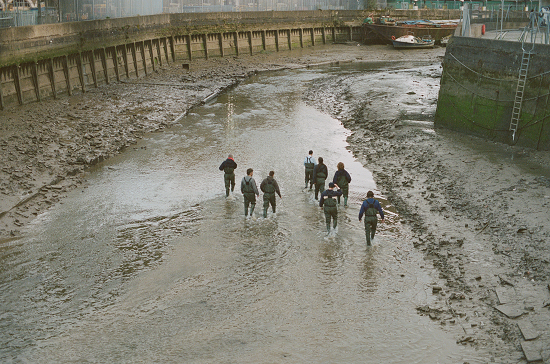
Photo by Doug Pulman
“It opened up quite a lot of compositional possibilities,” Llewellyn continues. “Collaging as a tool that we could then use in our actual songs.” Going forward, their music will likely employ more sophisticated production techniques, entire sections of their playing sampled and smashed against one another. “Everything before has been all about playing together in a room, every sound that’s heard on the recording was made at the same time as every other,” he adds. “Now we’re deliberately not doing that, juxtaposing things that weren’t originally recorded without this final composition in mind, jamming them together, almost crudely.” Take one track that will likely appear on the album, for example. Provisionally titled ‘Eavesdropping’, it begins with an iPhone recording from the empty swimming pool, then suddenly collides with something more professionally produced.
That slow, cyclical metamorphosis that began half a decade ago with a scrappy post-punk duo in the run-down room above a South London pub is still happening, then. As some songs reach completion, others begin the cycle all over again – it’s notable that after lockdown they’ve returned to improvising on guitar and drums as a trio – drawing on what’s come before as they evolve with more and more complexity, sometimes in a different direction entirely. As for what comes next, they’re still weighing that up, but gigs are on the horizon. Their recorded music has developed dramatically over the last eighteen months, and now their live show has to catch up.
“We’re trying to work out how we can do this movement between different environments live,” says Llewellyn. “If the first half of a song is recorded in a swimming pool with no close mics, then the second half is made up of very closely recorded electric guitars and improvised drums, how do we create that same movement from extreme distance to extreme closeness? Will that even work live? Shall we come at the song completely differently? Maybe we actually need to sample complete sections of the song and literally play sampled things live, push the difference and do something very extreme…” he catches himself monologuing and apologises. “I started to spiral a bit there…”
caroline release ‘Skydiving onto the library roof’ b/w ‘Everything For Everyone’ on 12" vinyl via Rough Trade tomorrow (June 25). You can purchase it here

